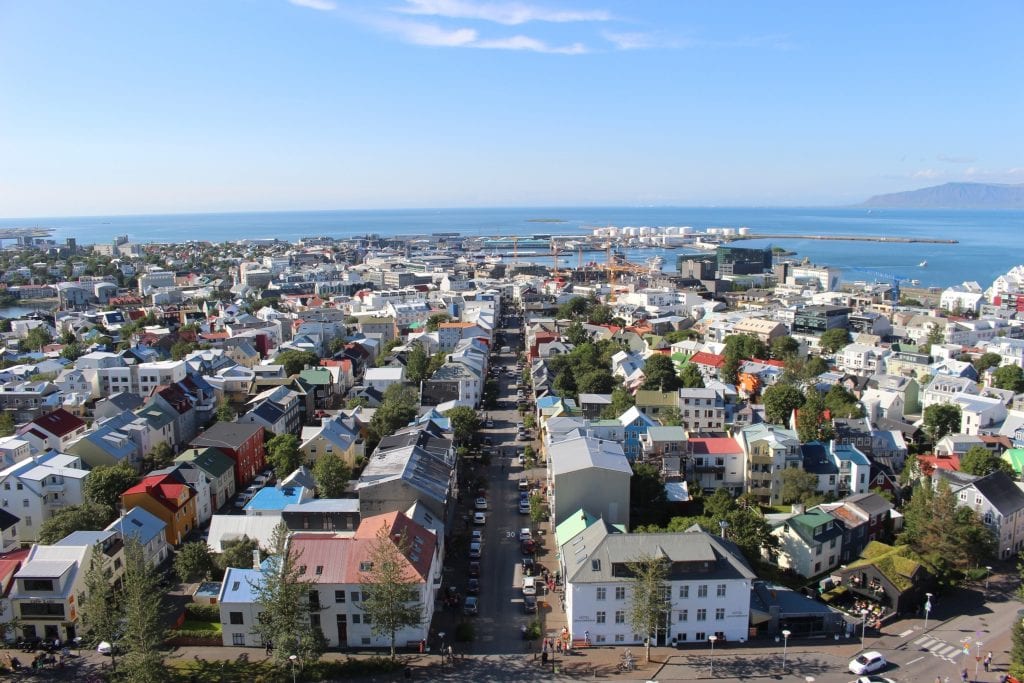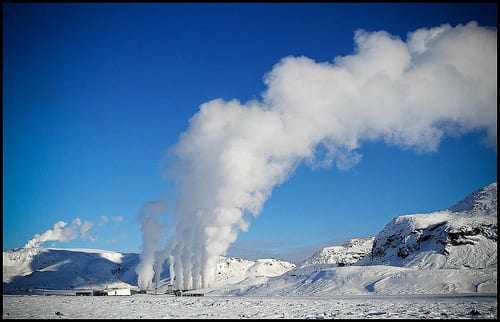Today’s post comes to us from Nellie Joselyn, a new member of Project ZeNETH. She spent this past summer in Iceland and was able to dive deep into the energy systems of this unique, island nation. Read on!

A Brief History
Iceland, it’s an intriguing place. Most Icelanders now live in modern homes or apartments but up until the 1940’s, many lived in small houses called turf homes. Wood was, and is, extremely hard to come by on the nearly treeless island and was deemed a luxury. Farmers would scavenge the black sea beaches for drift wood and mark it as their own. They then used the wood along, with sod and stone, to build their homes. The structures were extremely small, both to preserve heat for their long dark winters and to conserve materials.
Homes today in Iceland are still relatively compact as there have not been vast transformations from their past construction habits. This method also allows residents to avoid expensive heating bills, as the heater runs year-round. Living densely is extremely beneficial for energy conservation, especially in this region. Tiny homes would not be a significant adjustment for the style of living in Iceland, and are a very practical option to pursue.
Tiny Houses as Necessity
Iceland is a relatively small country, with a population of only 334,252 people. This number is climbing. As a result of this increase, a housing crisis is developing. It is reported that 17,000 apartments will be needed by the end of 2019 according to the housing financing fund. Currently the parliament does not have a strategy to accommodate the influx of people and the end of the year is approaching. This has left many people in hard conditions.
Tent cities have developed and some tent residents have been waiting on the Reykjavik public housing wait list for over six years. A tent is by no means a viable permanent housing arrangement, especially in such a chilly and wet climate. One resident spent five months on the street and the city offered her no help during that time. Eventually she found an apartment, but her entire monthly salary goes to rent. Tiny houses could offer a huge change. If one were to invest in a tiny home, they could see their money going towards a project with immediate payoff, a sense of ownership, and allowing the homeowner to avoid entering long term debt.
Renewable Living
Nearly 100% of Iceland’s electricity comes from renewable sources, with 73% coming from geothermal energy and 27% coming from hydro power. Tiny houses would not have as big of an environmental impact here as they might in other locations. Currently, Iceland is pulling geothermal power at an increasing rate from the Hellisheidi Geothermal Plant. This requires them to drill more bore holes, slowly depleting the resource.
Tiny homes would be beneficial in reducing the amount of overall electricity, but would most likely need to be hooked up to a main electric line. A typical solar array would not work very efficiently year-round in Iceland. In some parts of the country during the winter, the sun does not rise for 56 days straight. In the summer, they would perform bountifully with 24 hours of sunlight, but the rest of the year would need to pull from the geothermal or hydro power sources.
It Just Makes Sense!
Iceland’s population is extremely condensed near the few ‘major’ cities. This leaves a lot of the country uninhabited. There are lots of areas in the country that should remain uninhabited, but there is an immense portion of land that could be suitable for tiny houses. There are many small towns just outside of the capitol, only a 15-minute drive, that would be perfect for tiny house villages. On the contrary apartment complexes do serve a great purpose in a lot of areas by fitting a lot of people into a small space, but that is not a necessity in Iceland.
There You Have It
Tiny houses would allow residents to have their own space, be more environmentally friendly, and grant more economic stability in the long run. Living in small spaces is common in Icelandic history and there is no reason it could not remain part of their culture.
Tiny houses would by no means be an immediate fix, but they could be a potential long-term solution if people start to view this as a real viable option. More research would need to be conducted to see if this would be an opportunity that Icelandic citizens are interested in. For now, this article goes to show that tiny houses could be a solution for affordable and sustainable housing option in many places around the world.
RESOURCES:
http://tinyhouseblog.com/tiny-house-concept/tiny-iceland-cottages/
https://icelandmonitor.mbl.is/news/news/2017/08/05/housing_crisis_forces_locals_to_live_in_a_tent/
https://grapevine.is/news/2018/02/08/iceland-may-be-facing-housing-crisis/
http://icelandreview.com/news/2017/06/29/waitlist-social-housing-longer-ever




Posting as